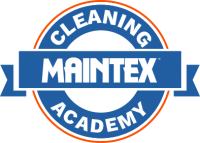Instructions
Always wear Personal Protective Equipment (PPE). Use the right tools and supplies and always refer to the SDS for proper chemical handling.

1
Always use your Personal Protective Equipment - safety glasses and gloves.

2
Always read the label instructions on each bottle to ensure proper use.

3
Pour LOD-Liquid Odor Digester into a pump sprayer. Dilute the LOD in a 50-50 mixture with water.

4
Remove any feces or debris before beginning the cleaning and treatment process.

5
Using a garden hose, spray the turf thoroughly to rinse and wash away any debris.

6
While the turf is wet, spray the LOD over the entire area. LOD is an 8-strain bacteria with genetically engineered enzymes specifically designed to digest foul odors.

7
Pet use will determine the frequency that cleaning is required. Be sure to clean proactively, and as often as needed to prevent complaints from residents.

8
It is very important to keep a regular program in place to eliminate the odors and keep the flies away, especially in the heat.

9
The best time to clean the artificial turf is first thing in the morning. The turf is cool, and the surface should not dry quickly. As long as the turf is wet, the LOD will double in its strength every 20 minutes. LOD will eliminate the foul odors and leave behind a mild pleasant scent.

10
Next, move to the pet waste station and spray a liberal amount of TurboKill disinfectant onto a clean microfiber towel.

11
Wipe down the waste station. Refill the dog waste bags as needed.

12
Empty all trash receptacles and replace the trash liners in each one.

13
To address pet issues on walkways, walls, and planters, use the pump type sprayer and apply the LOD (Diluted 50-50 with water) to the affected areas. Wet thoroughly, and use as often as needed.

14
LOD can be used on artificial grass, pavers, concrete, carpet, tile, outdoor walls, dumpsters, trash chutes, around bushes and anywhere where odor is an issue.
NOTE: LOD eliminates the ammonia and methane odors associated with pet areas. It can be used more frequently during warmer months.
Knowledge Quiz
Pet Areas
Pet Areas
When cleaning pet areas, what PPE is required?
You should wear gloves and safety glasses when working with chemicals and coming into contact with pet waste.
Before spraying with LOD, it is important to:
Before spraying with LOD, you should put on your PPE, remove feces and debris, and thoroughly wet the turf.
What is the dilution ratio of LOD to water?
The dilution rate is 50:50, meaning there should be equal amounts of LOD and water in the pump sprayer.
When is the best time to clean turf?
LOD works best when it remains wet. Early in the morning, surfaces are cooler so the product won't dry as quickly.
Where else can LOD be used to eliminate odors?
LOD is a versatile product that can be used on a variety of hard and porous surfaces including all of those listed above.
True or False: When wet, LOD doubles in strength every 20 minutes.
As long as the turf is wet, LOD will double its strength every 20 minutes, eliminating foul odors and leaving behind a pleasant, mild fragrance.
How often should pet areas be cleaned?
It is very important to establish a regular cleaning program for pet areas. Factors that may impact your cleaning frequency include pet use and outdoor temperatures.
During which season does turf need to be cleaned more frequently?
The heat in the summer can increase pet odors and attract flies, so it's important to clean turf more frequently during this season.
If pet odors start to get out of hand, what additional step(s) can be taken?
Diluted Super Deodorant can help contain orders while LOD does its job. Increasing cleaning frequency will reduce the spread of flies and odors.
What product should be used to wipe down waste stations?
Turbo Kill RTU Disinfectant Cleaner should be sprayed onto a clean towel to wipe down pet waste stations.
What product should be used on pet “issue” areas, such as walkways, walls, and planters?
LOD diluted 50:50 with water should be used with a pump sprayer to clean pet problem areas as soon as possible after soiling.
Which of the following is NOT a step in the Pet Care cleaning process?
Each of these are important steps in the pet area cleaning process, but Turbo Kill RTU Disinfectant Cleaner should only be used to sanitize touch points such as the waste station. Using Turbo Kill on turf is wasteful and will deactivate the LOD.
Pet Areas
Featured Products

L.O.D. Odor Digester – Gallon

LOD Mr. Digester – Quart

Super Deodorant

Turbo Kill disinfectant

Plastic bottle w/ Sprayer

Measuring Cup

Pump Sprayer – 3 gallon

Sprayer Hand 4 Pint

9” Sprayer

Wet Floor Sign

White Cotton Bar Towels

Water Hose

Trash Bags 33 x 40 – Black
Housing Communities

Cleaning Fitness Centers
The following steps will assist you in providing a clean, sanitary, and odor-free fitness environment for your active residents.

Cleaning A BBQ Grill
When cleaning barbecues, safety comes first so use the right tools, supplies and PPE and be sure to handle chemicals properly.

Cleaning Pet Areas
A proactive program utilizing the following steps will eliminate odors and keep your pet-friendly community clean and sanitized.

Cleaning Pool Decks and Shower Areas
The following steps will show you how to clean pool areas, outdoor furniture, and pool showers.







